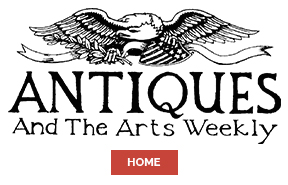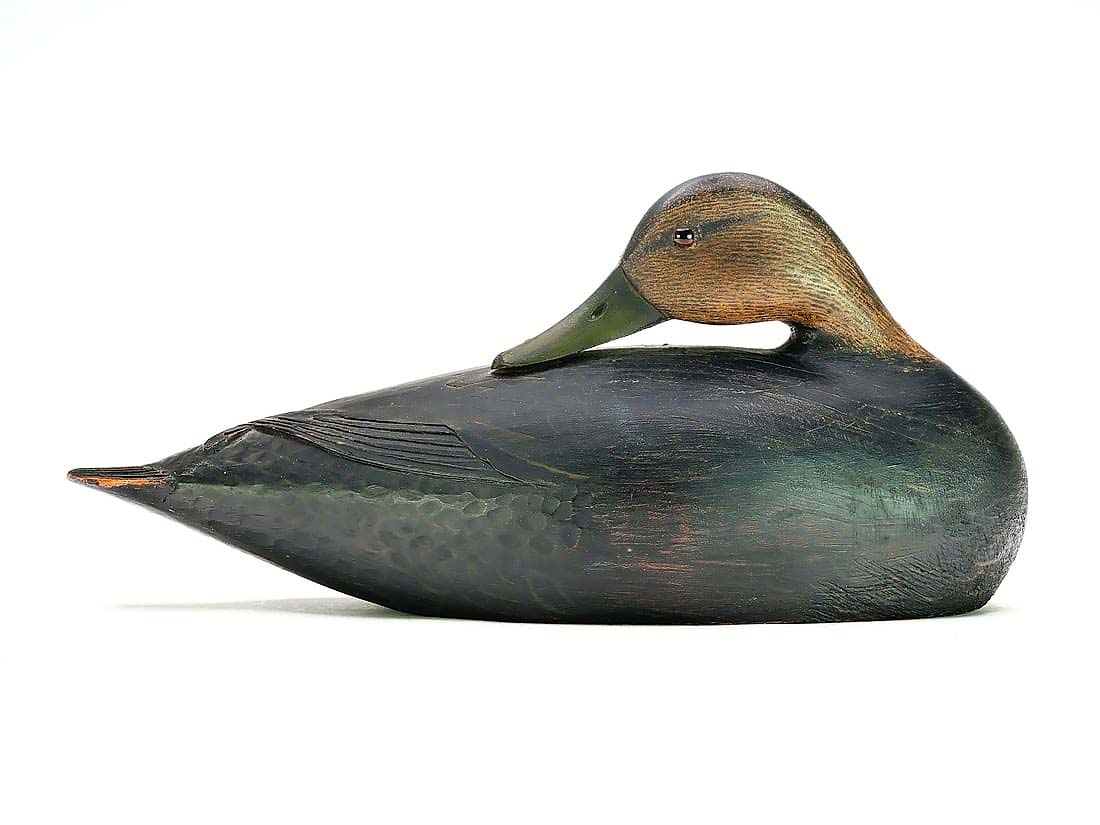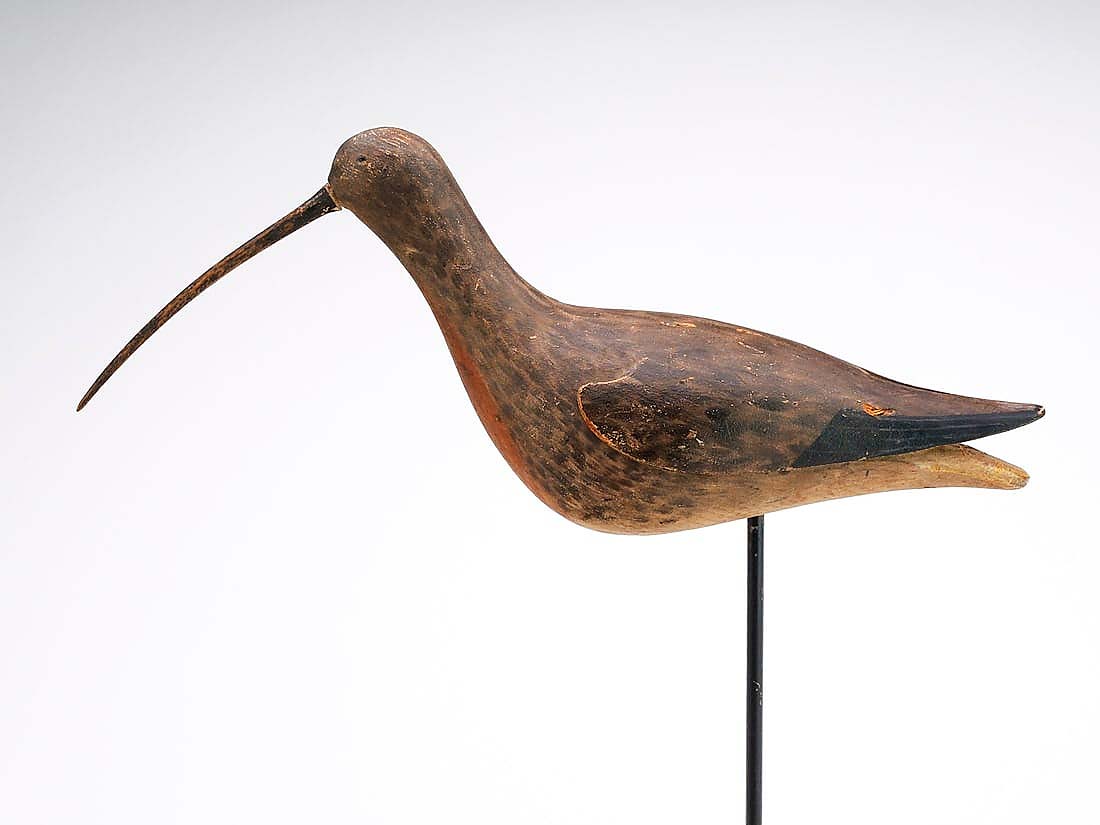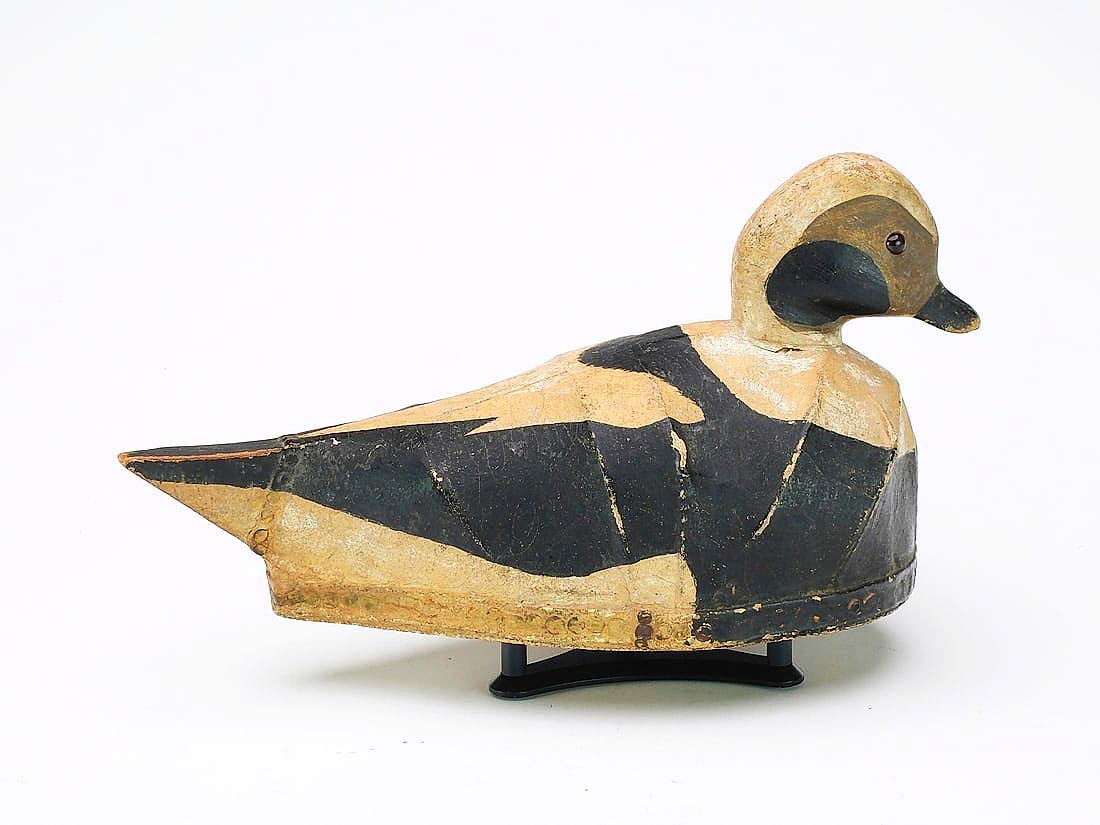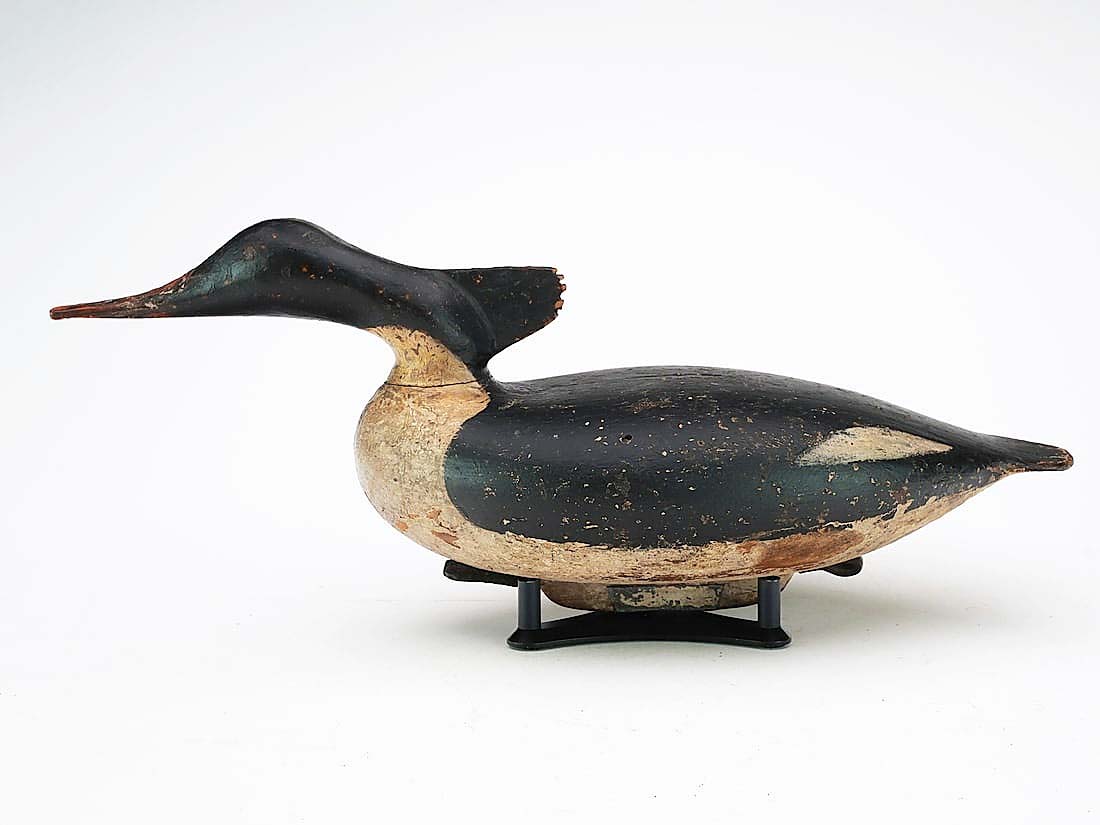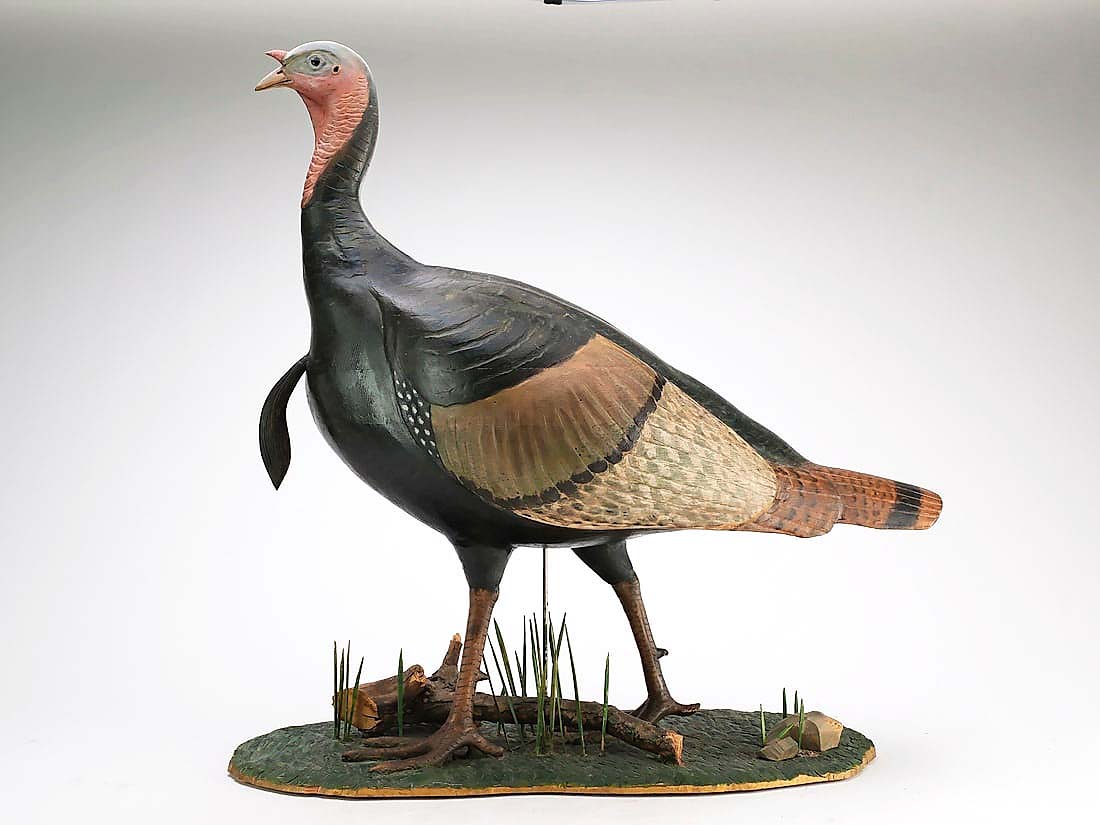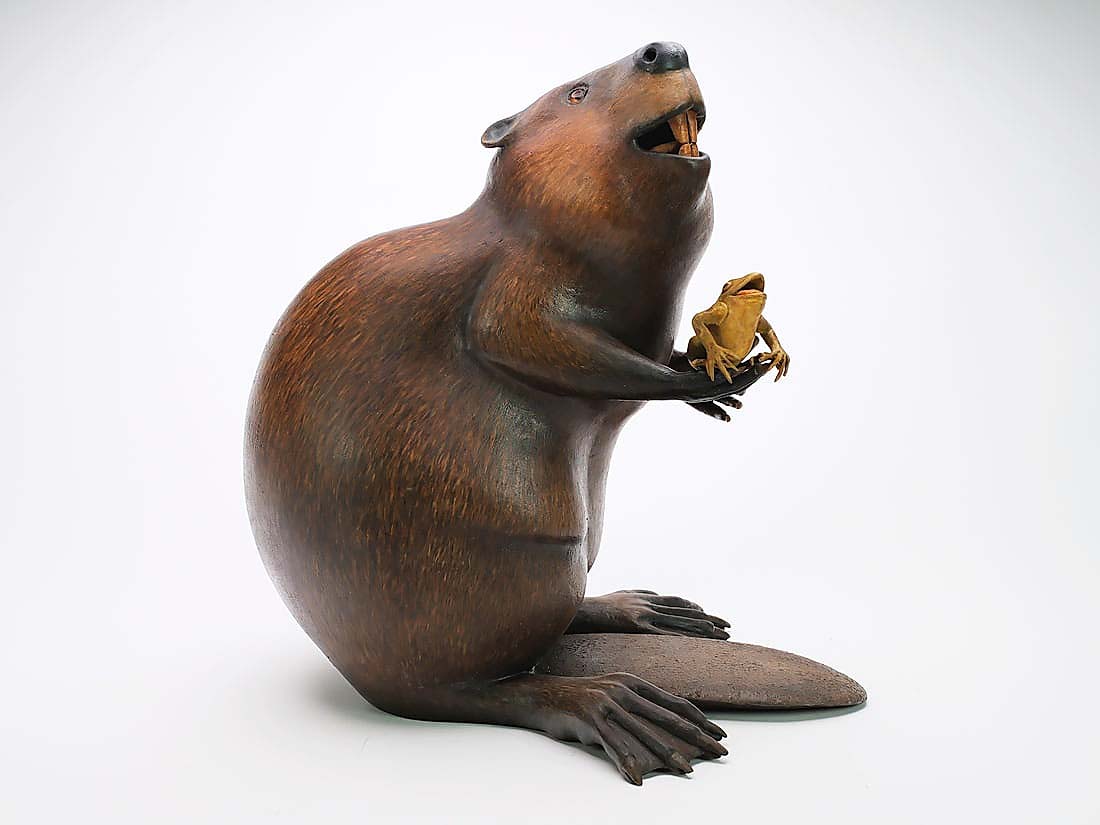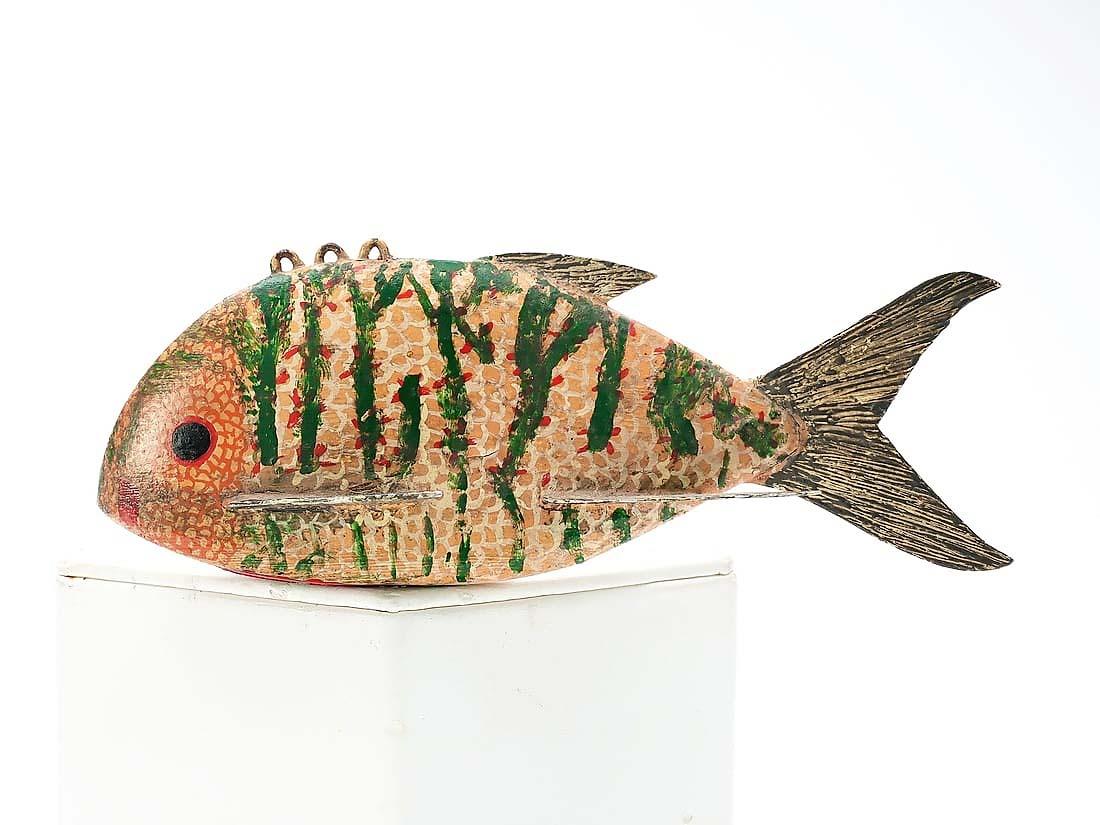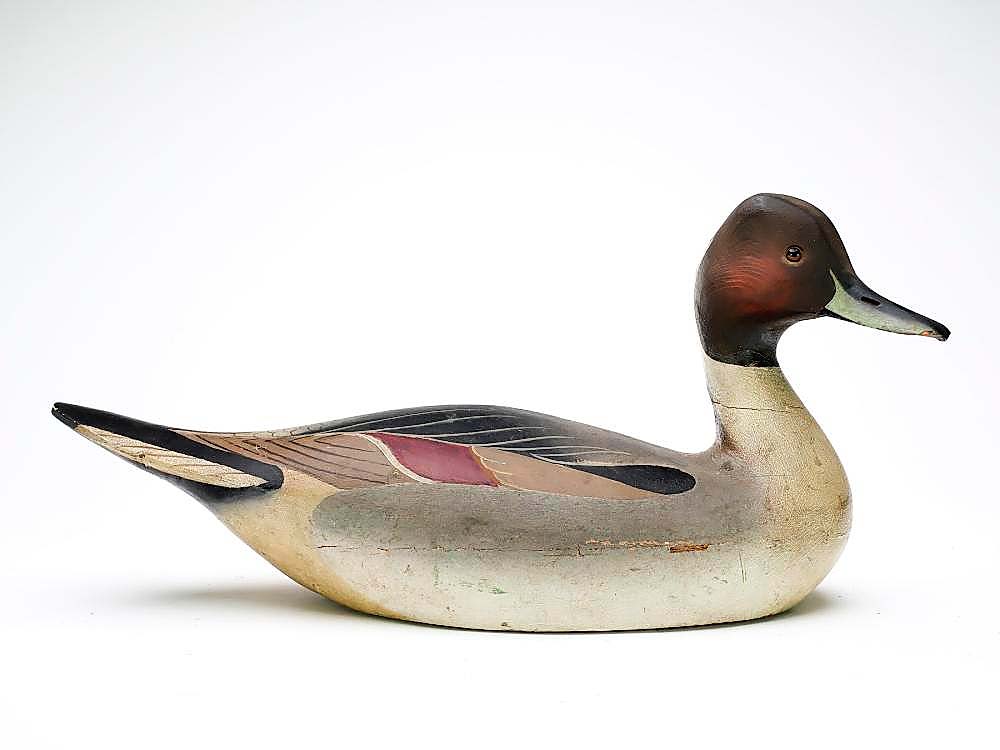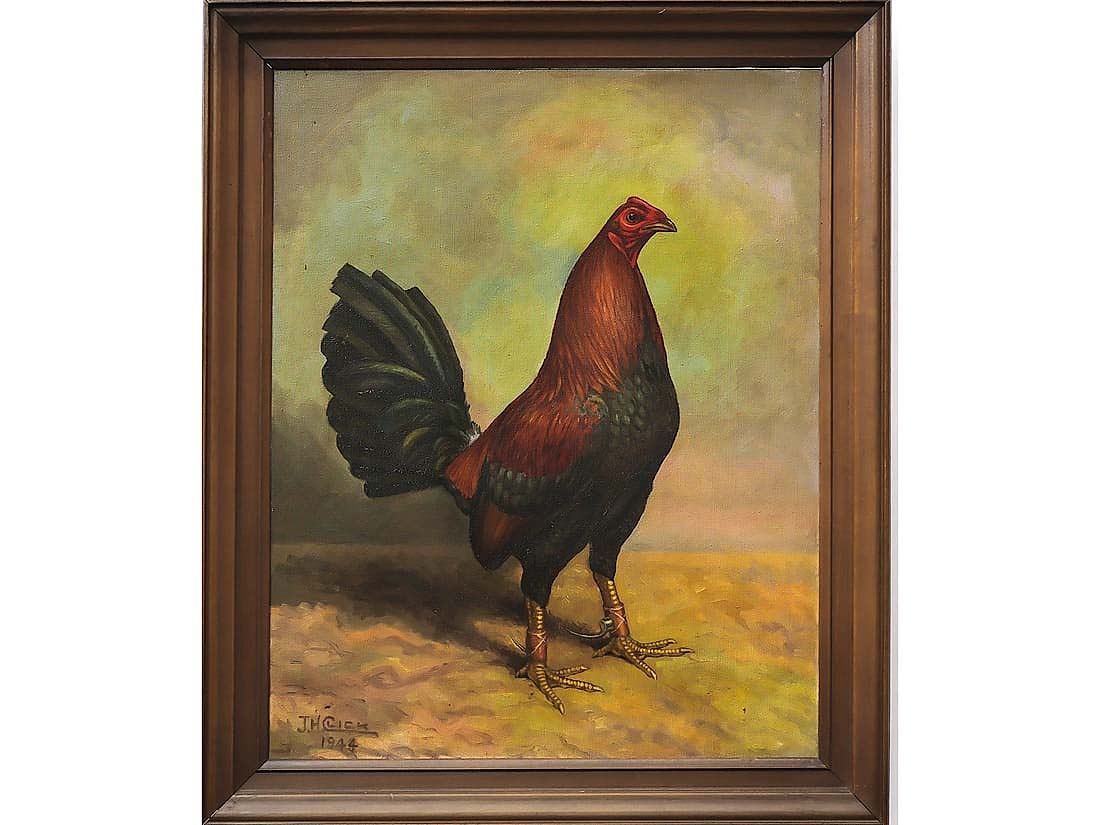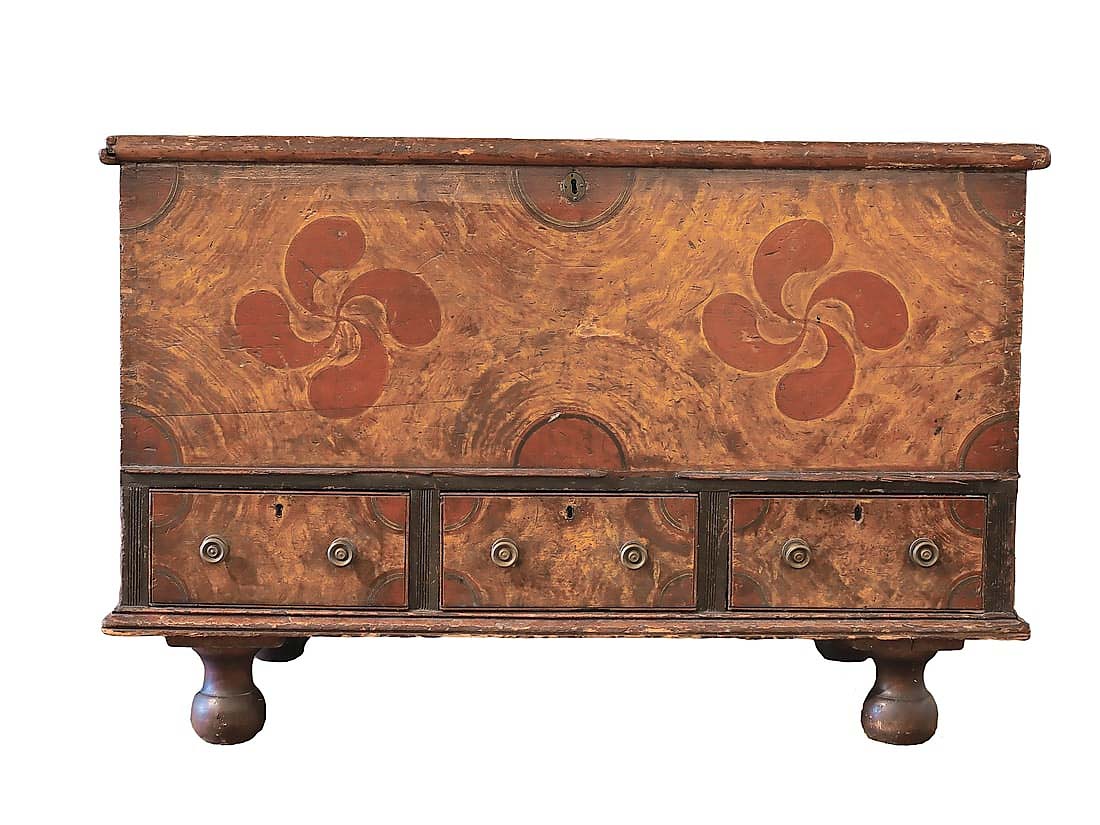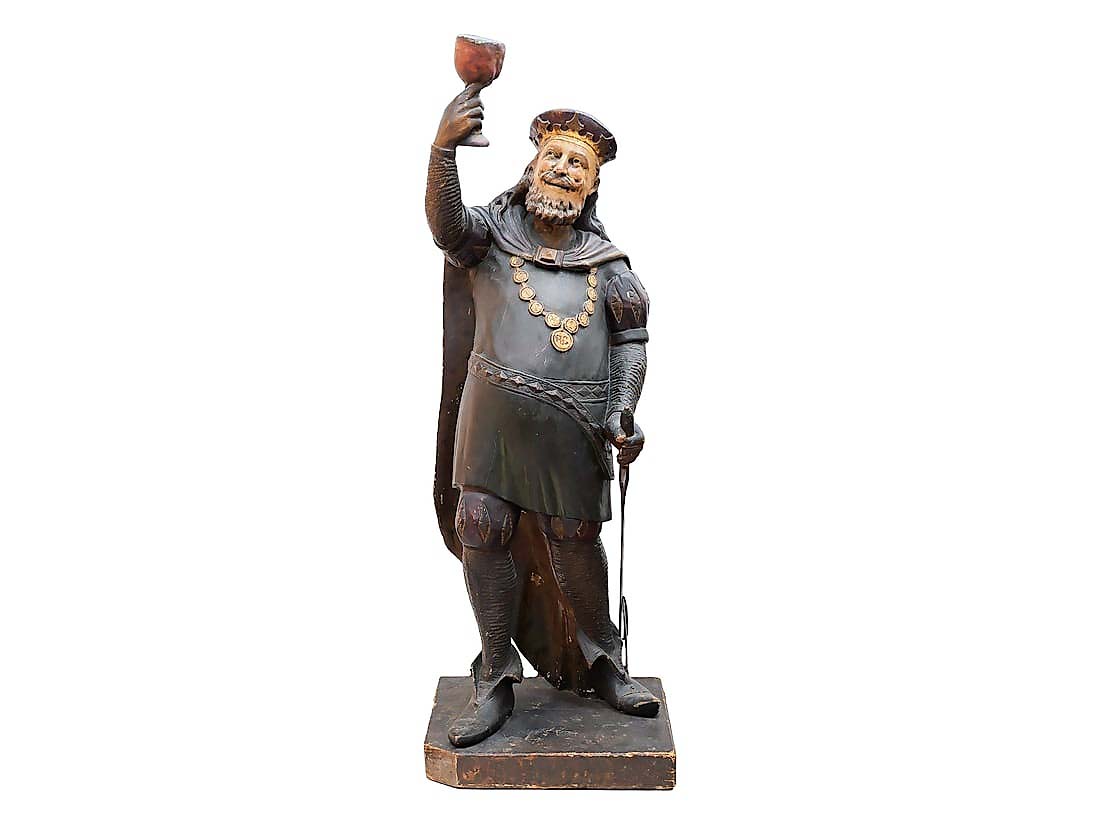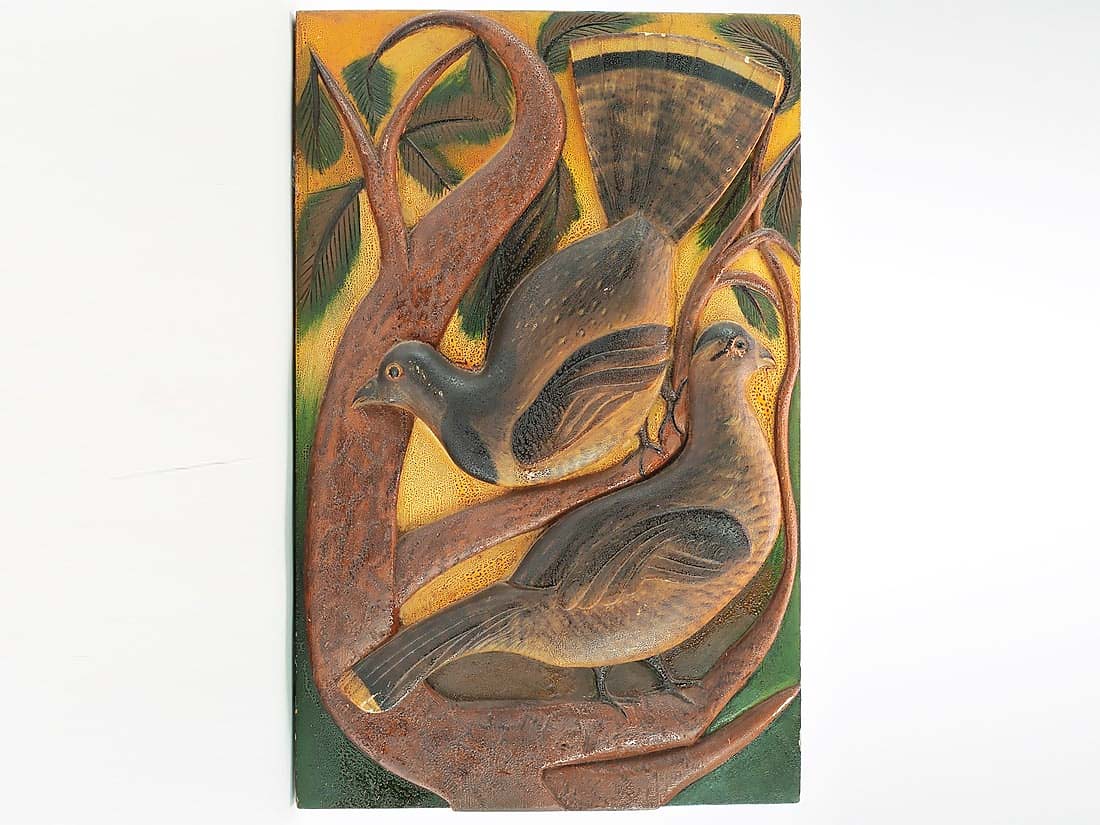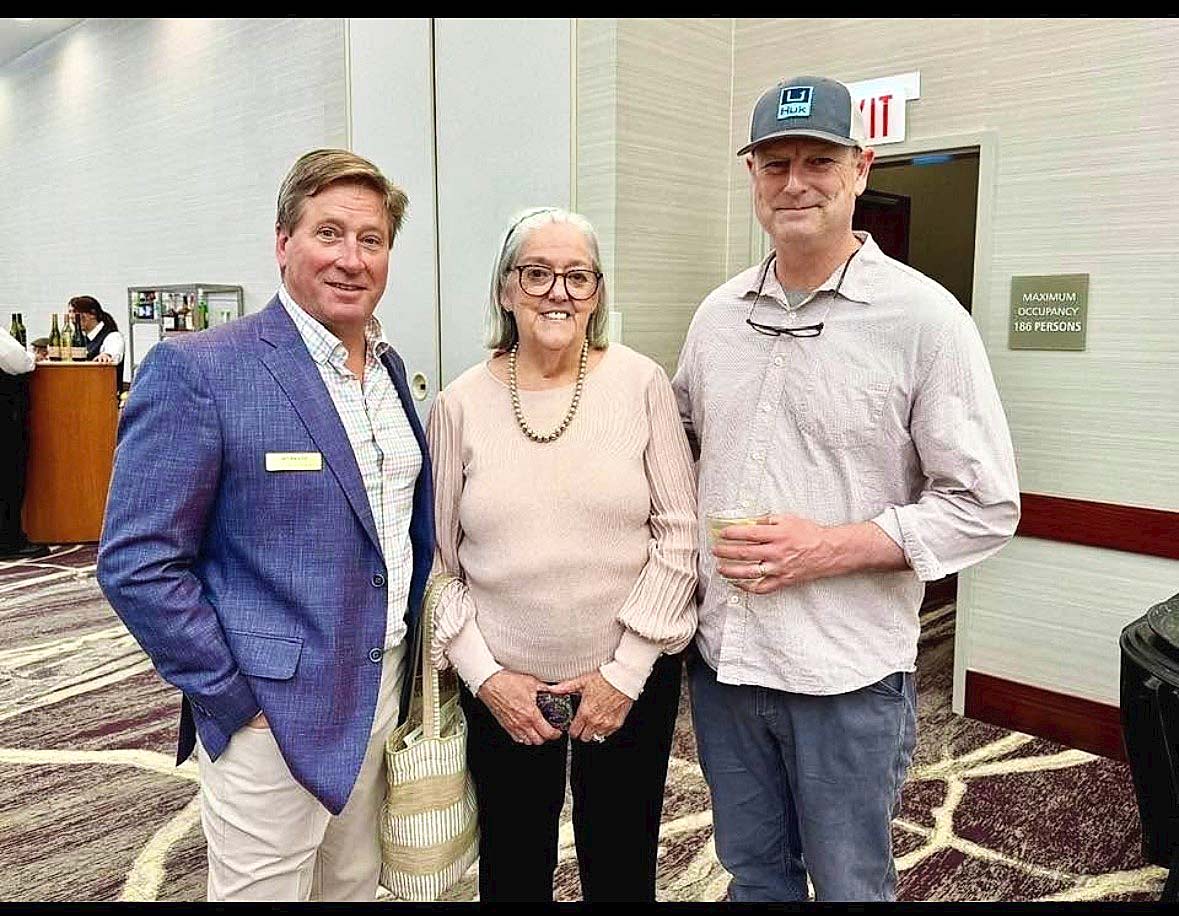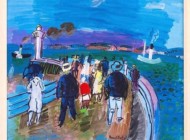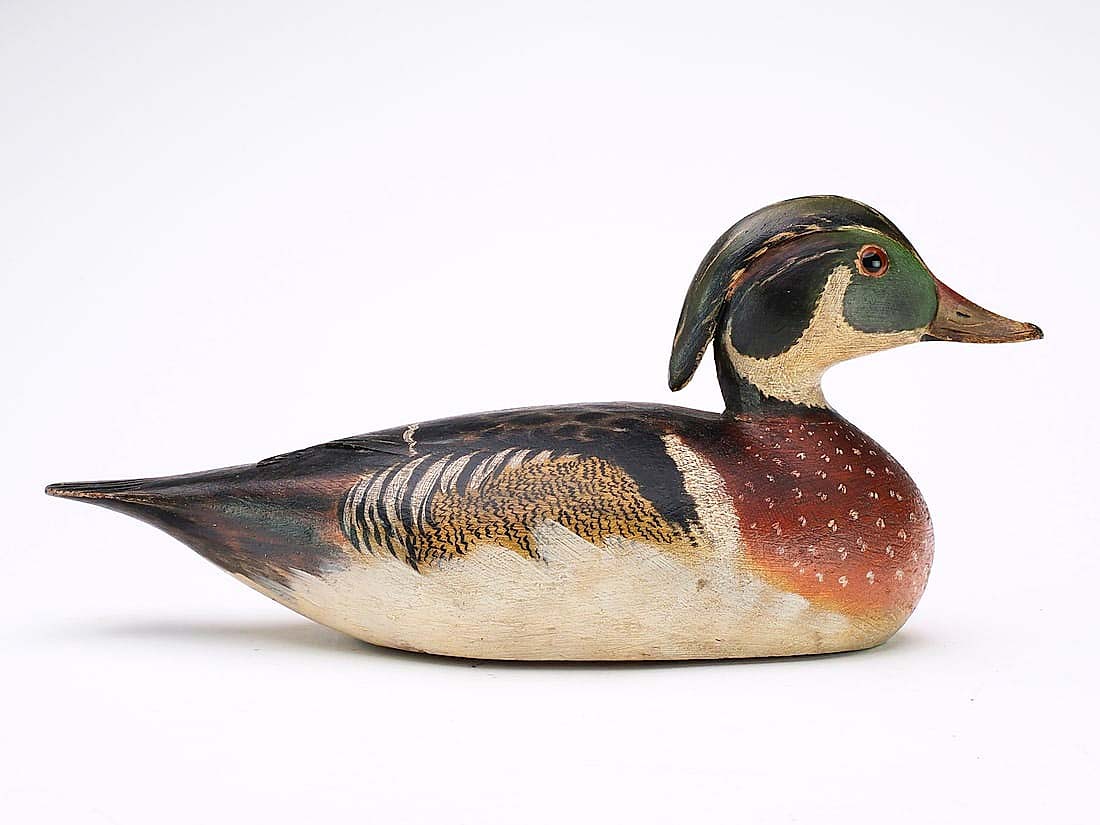
Jon Deeter often plans his sales to begin with one of the star lots. The first lot of the auction was Elmer Crowell’s exceptional wood duck which sold for $504,000, the sale’s highest price ($175/$225,000).
Review by Rick Russack
LOMBARD, ILL. — The first 10 lots of Guyette & Deeter’s Decoys and Sporting Art auction, April 24 and 25, alone grossed $1,227,300, and the first lot was the star of the sale, realizing $504,000. Seven of those 10 lots were from the collection of Ted Harmon (1934-2023), who started collecting decoys decades ago when he found an old Mason Factory decoy while hunting near his home. That find sparked a life-long interest in decoys — as a collector, as a dealer and as an auctioneer. With his wife Judy, he attended decoy shows and auctions around the country and, in 1986, conducted his first decoy auction. Their passion was decoys made in Massachusetts, from Newburyport and the North Shore to Cape Cod and down the South Coast. He was interested in the stories that went along with the decoys, as well as the history of the men who made them. In some cases, the makers’ identities were unknown; that was okay — a great decoy was still a great decoy. While some of his birds were included in museum exhibitions, many were stored in bank vaults, never seen by other collectors. To remedy that, and to prepare for the multi-part sale of the collection, Guyette & Deeter sponsored an exhibition late last year, presenting most of Harmon’s collection at the Havre de Grace Decoy Museum in Maryland. (Copies of that 145-page exhibition catalog are available for $20 from the museum or Guyette & Deeter). While we’re on the subject of catalogs, the 220-page color catalog for this auction had close to two dozen essays by Bill Lapointe on the carvers, the collectors and often the ducks themselves, such as the essay “Elmer Crowell’s Black Ducks.” These essays make the printed catalog a worthwhile addition to a decoy collector’s library.
The sale began with 50 decoys from the Harmon collection and achieved some of the highest prices of the two-day sale, though there was much more to the sale. Featured were contemporary decorative carvings by Frank Finney, Mark McNair and others, outstanding Southern and Canadian decoys, fish decoys by Oscar Peterson and other makers, as well as decoys from the Midwest, Pacific coast and other regions. The folk art section included cigar store trade figures, a John Haley Bellamy spread-winged eagle, weathervanes, carved walking sticks and paint-decorated furniture. There were numerous examples of sporting art, duck calls and still more. A crowd of about 150 were present for the live sale and several hundred participated online.
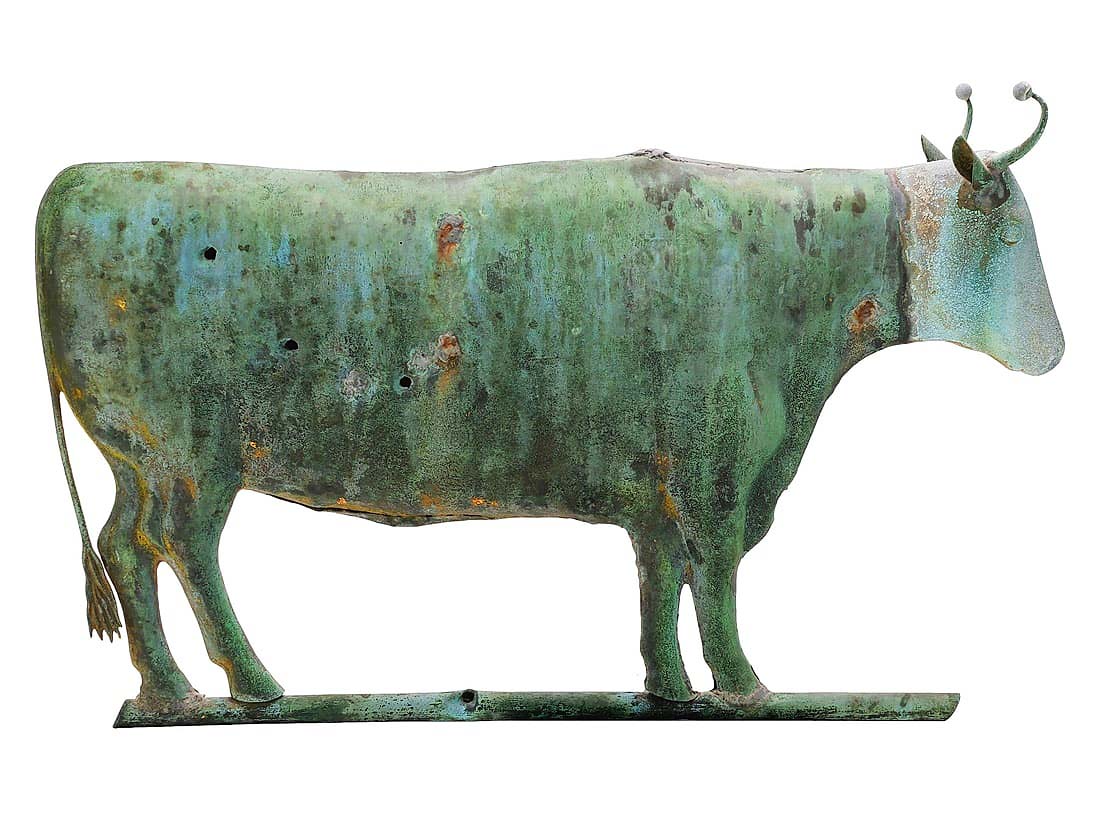
Weathervanes included this 29-inch-long copper and zinc cow attributed to Cushing and Company of Boston. It realized $4,800 ($6/9,000).
Did buyers like Harmon’s birds? Simply put: yes. A wood duck drake by Elmer Crowell (1862-1951) sold for the sale’s highest price of $504,000 after a bidding battle that lasted nearly 10 minutes. The decoy, with maker’s mark, had an extended crest, raised crossed wingtips, relief tail feather carving and exceptional paint detail. It was used on the 2004 Massachusetts Waterfowl Stamp and has been pictured in at least two books. It was purchased by a collector who has bought other high-quality decoys from the company. Five other Crowell decoys from the Harmon collection were among the sale’s 10 highest-earning lots. A preening black duck with raised, crossed wingtips and relief tail feather carving brought $324,000. (A bird of similar quality, with the head in a different position, sold for $258,000 at Guyette & Deeter’s sale last July; that buyer was the underbidder on this one.) We mentioned that a great decoy whose maker is unknown is still a great decoy, and a shorebird, a rare long billed curlew from the rig of Dr John C. Phillips (a wealthy businessman who was one of Elmer Crowell’s patrons) demonstrated this point. It had deep relief wing carving with raised separated wingtips; it sold for $84,000. Another shorebird from an unidentified maker, also from the Phillips rig, brought $33,000. In total, the 50 lots from the Harmon collection realized $2,270,100.
The second-highest price of the sale was achieved by a pair of early Mason Decoy Factory challenge-grade wood ducks from the Peter and Diana Bennett collection; they realized $354,000. From the same collection, two other Mason Decoy lots also did well. An early, handmade blue-winged teal, with a slightly turned head and double blue paint pattern, far exceeded the estimate, earning $70,800. A rigmate pair of Mason challenge-grade mergansers with extended crests reached $54,000.
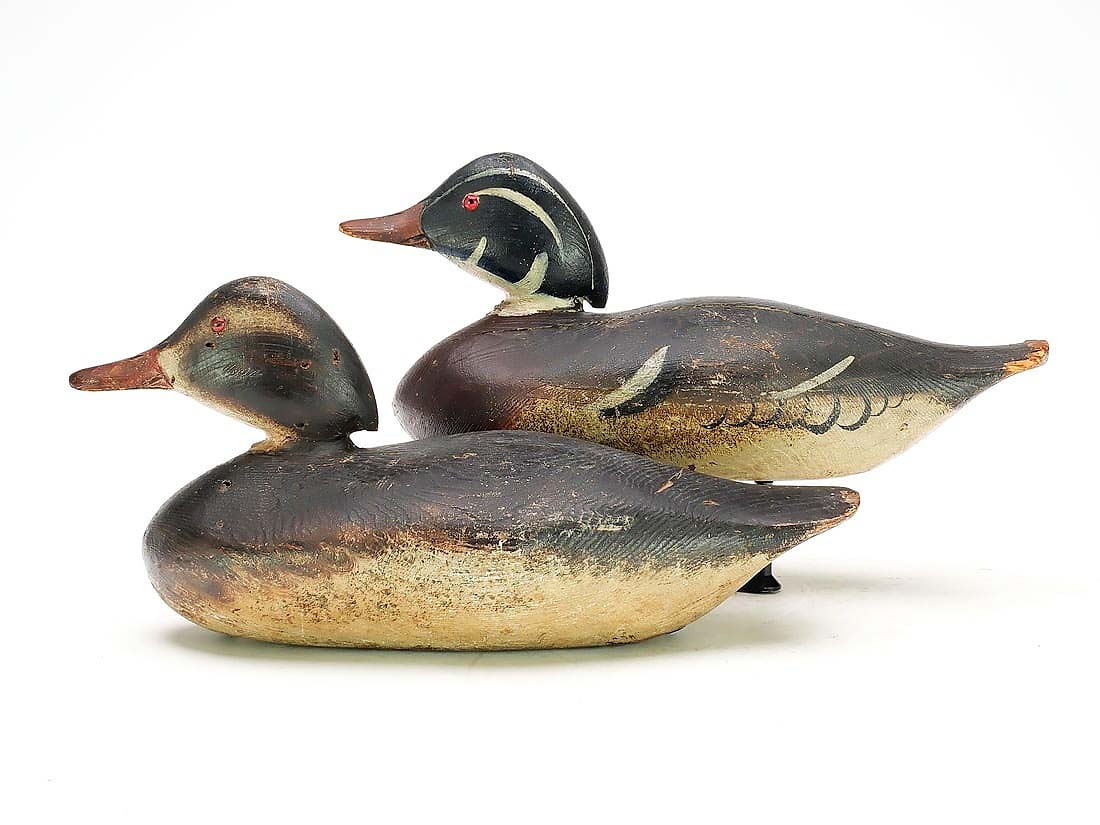
This is the only known rigmate pair of Mason challenge-grade wood ducks; it achieved $354,000 ($60/90,000).
The wide selection of shorebirds included some from the Harmon collection and others. Harmon’s rare carved-wing peep with a slightly turned head and tack eyes made by Elmer Crowell sold for $122,000. It had extra relief feather carving on its back, a feature not usually seen on Crowell examples. A sleeping peep with a split tail and glass eyes, made by Melvin Gardner Lawrence of Revere, Mass., earned $108,000. A rare Hudsonian curlew by Long Island, N.Y., carver John Dilley reached $66,000, and a rare willet with carved wings and detailed paint, by the same carver, realized $24,000. A ruddy turnstone by New Jersey carver Daniel Lake Leeds brought $42,000.
Although decoys are certainly folk art, Guyette & Deeter sales include other folk art forms, such as weathervanes, cigar store trade figures, bird trees, grain painted furniture and more. A circa 1860-75 carved King Gambrinus brewery trade figure, standing 53 inches tall, earned $27,000. According to legend, he was the patron saint of brewing and the “King of Beer.” The figure would have stood outside a bar, much as a tobacconist figure would stand outside a tobacco store. There were several carved walking sticks, including one with two bead eyes and a skunk, which earned $2,400. A well-carved eagle plaque, made by the Artistic Design Company of Boston, measuring 55 inches wide, featured an American shield and flag and earned $4,200.
The market for contemporary carvings by Mark McNair and others is strong. Frank Finney’s folk art carvings are popular and there were close to two dozen in this sale. One of his miniatures, a prothonotary warbler with raised wingtips and relief tail feather carving, just 5½ inches tall, brought $720. A hollow carved blue whale weathervane, 30 inches long, realized $12,000, while a 20-inch-tall beaver holding a frog reached $33,000. His carvings often include a wide range of animals and birds.
After the sale, Jon Deeter was justifiably pleased with the results. “We exceeded our expectations. The $6.2 million dollar gross was the third-highest figure ever for a decoy auction, and the first day was the highest single day in our history. Judy Harmon and her son Steve, who were at the auction, and other consignors, told me they were more than satisfied with the results and were pleased with the overall experience of selling at auction. We can’t ask for more than that. Our summer sale will have 50 more birds from the Harmon collection, so I think we can expect another strong sale.”
For information, 410-745-0485 or www.guyetteanddeeter.com.
